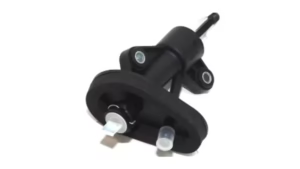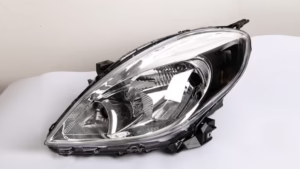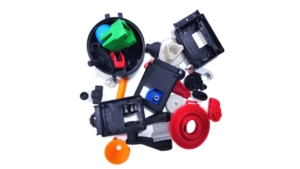The clutch master cylinder ensures smooth vehicle control, but its failure can grind your drive to a halt. This article explores its function, failure signs, and key design factors.
What is a Clutch Master Cylinder?

In the manual transmission vehicle, the clutch master cylinder stands as a pivotal component, orchestrating the seamless connection between driver input and mechanical action. The clutch master cylinder is typically mounted near the firewall and linked directly to the clutch pedal.
Role of the Clutch Master Cylinder
At the heart of the hydraulic clutch system, the clutch master cylinder’s function is to convert physical force from the clutch pedal into hydraulic energy. When the clutch pedal is depressed, a piston inside the clutch master cylinder pushes hydraulic fluid through a line to the clutch slave cylinder. This fluid pressure causes the slave cylinder to move the clutch release mechanism, disengaging the clutch. This process allows the driver to smoothly shift gears.
Signs of Clutch Master Cylinder Failure
Recognizing the signs of a failing clutch master cylinder is essential to prevent further damage and maintain vehicle safety. Common symptoms include:
Spongy or Soft Clutch Pedal Feel: If the pedal feels unusually soft or sinks to the floor without resistance, it may indicate internal leaks or air in the hydraulic line.
Difficulty Shifting Gears: If gears grind or resist engagement, the cylinder master clutch may not be fully disengaged, making shifts hard.
Low Hydraulic Fluid Levels: Check the reservoir near the clutch master cylinder. A drop in fluid levels often indicates a leak, which can stem from worn seals or a cracked plastic clutch master cylinder housing.
Grinding Noises or Clutch Slipping: A failing clutch cylinder master may cause the clutch to slip, resulting in grinding sounds or a loss of power during acceleration.
Clutch Sticking: If the pedal sticks to the floor or doesn’t return fully, the cylinder clutch master may be obstructed or damaged, hindering fluid flow.
Design Considerations for Clutch Master Cylinders
Designing a reliable clutch master cylinder involves multiple engineering factors to balance durability, compatibility, and performance. Key considerations include:
Material Durability: The body and piston must resist corrosion and wear. The cylinder clutch master housing is often made from reinforced plastic or metal alloys. Plastic clutch master cylinders offer lightweight, corrosion-resistant advantages, while metal versions provide strength.
Compatibility: A cylinder master clutch must be tailored to specific vehicle makes and models. Variations in pedal travel, hydraulic fluid type, and clutch system design require precise engineering to ensure seamless integration. A poorly matched cylinder can lead to inefficient clutch operation or premature failure. Leveraging automotive injection molding processes helps achieve consistent part quality and precision fit.
Ease of Installation and Maintenance: Mechanics value designs that simplify installation and servicing. A well-designed clutch master cylinder includes accessible ports for fluid refilling and bleeding, reducing downtime during repairs.
Leak Prevention: The clutch cylinder master relies on airtight seals to prevent hydraulic fluid leaks, which can compromise performance. Advanced sealing technologies and robust housing designs ensure long-term reliability.
Environmental Resistance: Clutch master cylinders must endure temperature extremes, vibration, and potential exposure to contaminants under the hood or cabin.
Zhongren’s Customized Clutch Master Cylinder Housing Solutions
Zhongren offers customized plastic clutch master cylinder housings with durability and compatibility. The high-quality plastic custom solutions ensure reliable performance and prevent leaks. If you are looking for a custom clutch master cylinder solution, Zhongren can provide designs tailored to your requirements. Welcome to contact Zhongren to get a custom solution.





